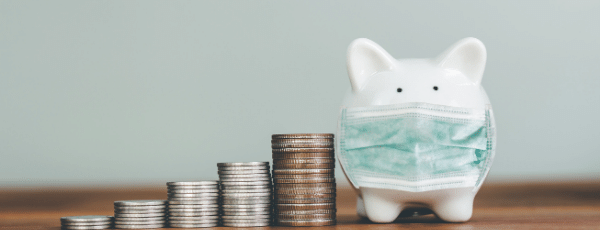How to Get Your Recovery Rebate Credit

- Not everyone who was eligible for a stimulus check received one.
- If you did not get a stimulus check you might be eligible for a Recovery Rebate Credit.
- The credit can be claimed for the 2020 and 2021 tax years.
Table of Contents
In response to the economic downturn brought about by the coronavirus pandemic, the government directed the IRS to issue two stimulus payments. One check for $1,200 was sent in the spring of 2020, and the second, a $600 payment, began to go out at the end of December 2020.
If you didn’t receive one or both of the stimulus checks or received less than you’re entitled to, you’re not alone. The good news is you may still collect some of what you may be owed via the recovery rebate credit.
Let’s take a closer look at why you might not have received your stimulus payment(s,) or were sent less than what you are eligible for, and how the recovery rebate credit may help you and your family.
Reasons you didn’t get a stimulus check(s)
Under the law, stimulus checks were only sent to those who met certain criteria, so not all Americans received them. If you didn’t get a payment, it may be that you did not meet the criteria, or experienced other issues.
Your income was too high: The IRS looked at your most recent tax filing to determine whether your income qualifies you for a check. If you made “too much” money in 2018 or 2019 (more than $75,000 as an individual or $150,000 as a couple), you didn’t qualify for a payment.
You haven’t filed your taxes: If you haven’t filed your 2018 or 2019 taxes, the IRS won’t know if you’re eligible for stimulus payments and where to send them, if you are. However, if your income is below the level where you don’t have to file tax returns, you may still receive a check in the mail. It may take some time arrive.
You didn’t update your bank account details: Stimulus checks will be deposited directly into the bank account provided on your 2019 or 2018 tax return. If you didn’t list an account, the IRS will send a physical check to your most recent address on file. This can take some time.
You owe money: If you owe money for things like child support, past-due taxes, or bankruptcy proceedings, you probably won’t receive a stimulus payment.
You recently moved: The IRS may have sent your stimulus payment to your old address if they don’t have a bank account on file and you’ve recently moved. If the postal service is forwarding your mail, you should eventually receive it.
What is the Recovery Rebate Credit?
If you are eligible for a stimulus check but didn’t receive one, or received less than you should have, the Recovery Rebate Credit may be an option you will want to explore. Authorized by the Coronavirus Aid, Relief, and Economic Security Act (CARES Act), you may claim a credit on your 2020 tax return.
The credit can reduce the taxes you may owe or increase your refund amount. You may be able to claim the Recovery Rebate Credit if any of these scenarios apply to you:
You didn’t receive a 2020 stimulus payment, but your 2020 tax information makes you eligible for one.
You’re single, your adjusted gross income is less than $75,000, and you received a payment of less than $1,200 in the first check, or less than $600 in the second one.
You’re married and filing jointly, your adjusted gross income is less than $150,000, and your first payment was less than $2,400 or second payment was less than $1,200.
You didn’t receive the $500 you were entitled to for each qualifying dependent in your first check, and $600 in your second payment.
You had a baby in 2020 and did not receive a payments for that child, even if you collected the maximum payment as an individual or couple.
Note that your credit will be lowered if you’re a single taxpayer who earned over $75,000, a head of household filer with an income of more than $112,500, or married, filing jointly, and made over $150,000.
How to calculate your Recovery Rebate Credit
If you believe you qualify for the Recovery Rebate Credit, you can figure out the amount you are owed with the 2020 Form 1040 and Form 1040-SR. Here are the steps you can take:
Look at your Notice 1444, a document you should’ve received from the IRS if you were issued a stimulus check.
Read the directions for Line 30, Form 1040 or Form 1040-SR.
Fill out the worksheet for Line 30.
If you need help, don’t hesitate to consult a tax professional like a CPA or your tax software program. The IRS also has some information that might help.
Use your Recovery Rebate Credit on your debt
If you’re dealing with debt and did receive the Recovery Rebate Credit, it might be wise to apply that money to your debt payments. It may also make sense to download our How to Manage Debt guide so you can learn more about managing your money and work toward a brighter, debt-free future.
Learn More
3 Things You Might Need More Than a Stimulus Check (Freedom Debt Relief)
3 Smart Ways to Spend Your Stimulus Check (Freedom Debt Relief)
When Do Coronavirus Aid and Government Stimulus Programs End: Round Up (Freedom Debt Relief)
Why Haven’t I Gotten My Stimulus Check? 6 Reasons Your Payment Might be a No-Show (MarketWatch)